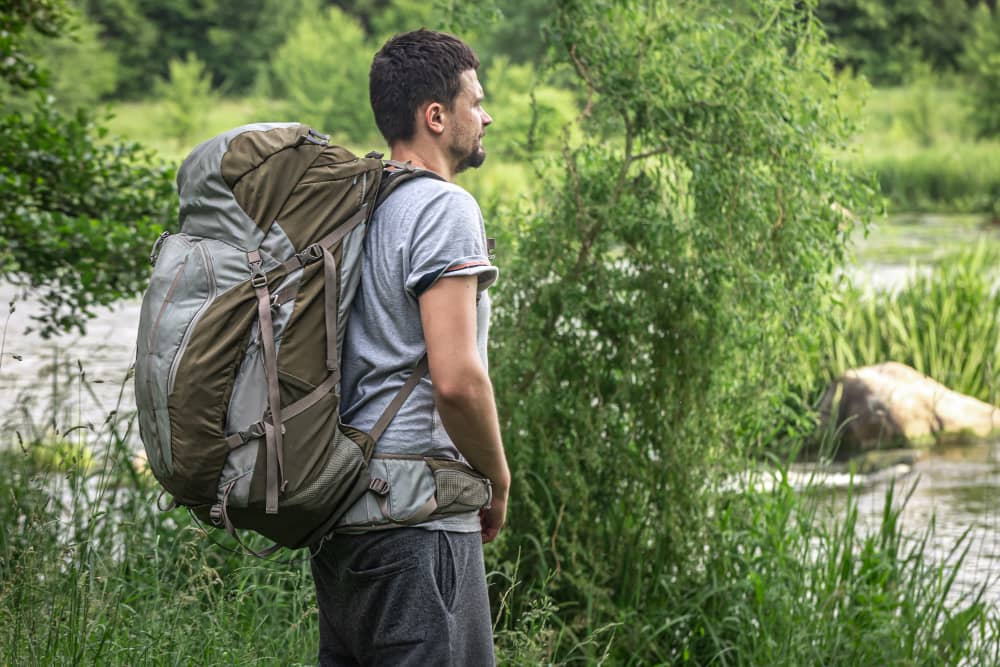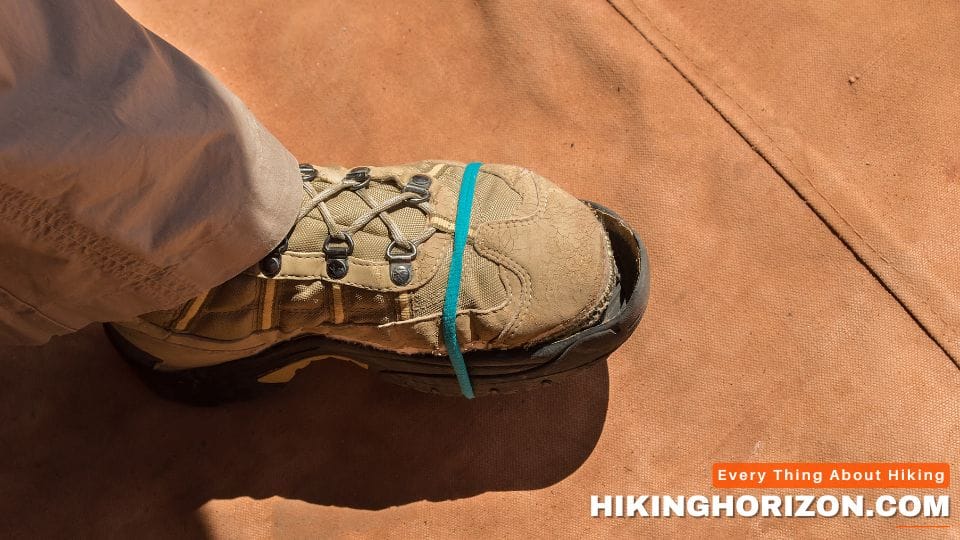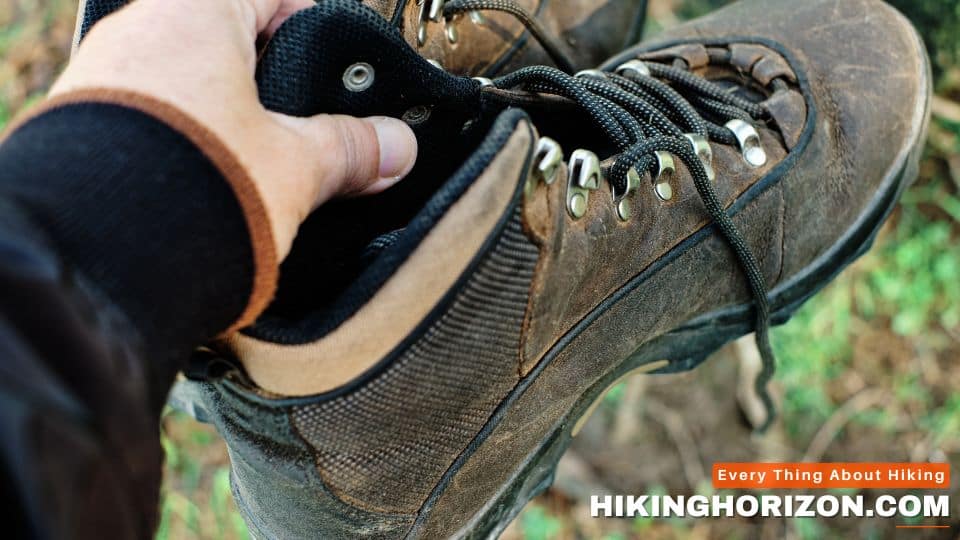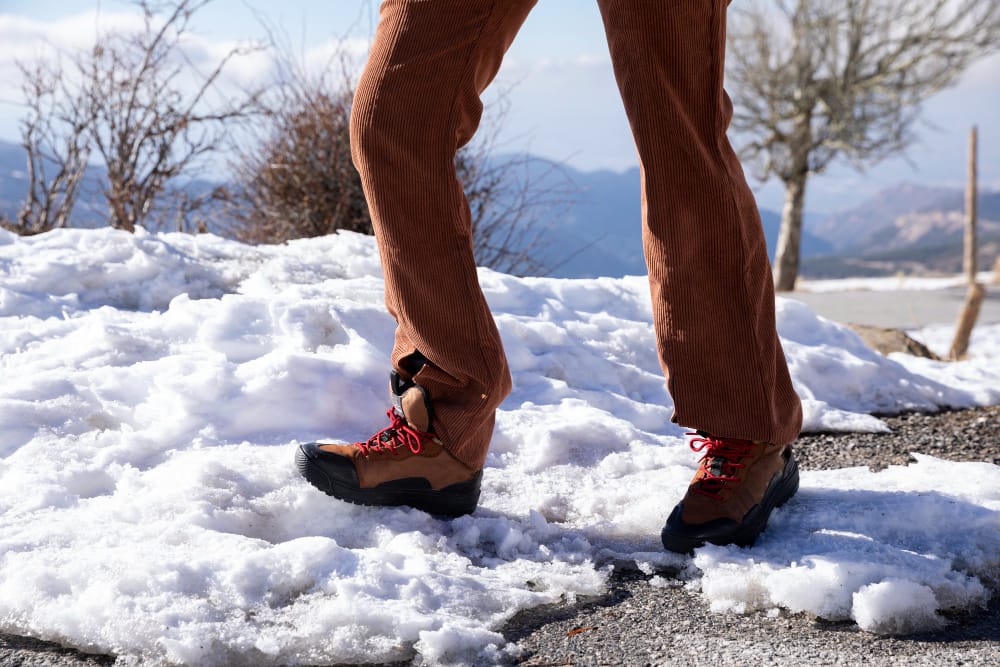

Do you love exploring mountain trails but fear exacerbating your back pain? Have nagging spine issues forced you to forego the hiking adventures you crave? You’re not alone in wondering, can hiking hurt your back? In some cases, the answer is yes. Many hikers and potential outdoor enthusiasts with chronic back problems struggle to balance their passion for nature and physical limitations.
The good news? With thoughtful preparation and expert hiking techniques tailored for bad backs, you can hit the trails this season without crippling back pain. This post will guide you through intelligent strategies to prevent hiking from hurting your back. You’ll discover how to customize your gear, pace, strength training, and recovery time for your unique needs. Say goodbye to sitting at home nursing a sore back while others summit epic vistas! Follow these tips to make hiking with back pain not only possible but rejuvenating. Your mountain adventures await!
Can hiking hurt your back? Possible Causes of Lower Back Pain While Hiking

Hiking can cause back pain or aggravate existing conditions, especially when carrying a heavy backpack or walking on uneven terrain. Improper posture and muscle imbalances can also contribute to back issues. A sports medicine specialist, Dr. Jane Smith, says, “Hiking, like any other physical activity, can cause strain on the spine, especially if you’re not prepared for it or if you have pre-existing spinal issues.”
Several factors can contribute to back pain during or after a hike. Identifying the root cause is the first step toward prevention and relief.

Carrying a Heavy Backpack
One of the primary culprits of back pain while hiking is carrying a heavy backpack. When a backpack is too heavy, it can strain the muscles and ligaments in your back, causing discomfort and potential injury.
According to the American Chiropractic Association, a backpack should weigh no more than 10% of your body weight. The Journal of Applied Physiology published a study that revealed that carrying a load equal to 20% of one’s body weight or more can significantly increase the risk of back pain.
According to Dr. Michael Gleiber, a board-certified orthopedic spine surgeon, “carrying a heavy backpack can cause muscle strain and even lead to long-term problems like chronic back pain”.
Poor Posture and Body Mechanics
Poor posture and body mechanics can also lead to back pain during a hike. Slouching, leaning too far forward, or failing to engage the core muscles can all strain the spine. Dr. Jane Smith, a physical therapist, and avid hiker, say, “Maintaining proper posture and alignment during a hike is crucial for preventing back pain and minimizing the risk of injury.”


Uneven Terrain and Slippery Surfaces
Hiking on uneven terrain or slippery surfaces can cause sudden movements and awkward positions, adding stress to the back. A study by the American Journal of Sports Medicine found that individuals who frequently hike on uneven terrain are likelier to experience lower back pain.
Another 2016 study published in the journal PLOS ONE found that walking on uneven surfaces, such as those encountered during hiking, increases the likelihood of developing lower back pain.
Using Underutilized Muscles
For many people, hiking can engage muscles not used as often in daily life. It can lead to muscle soreness and back pain, especially if you’re not used to such physical activity. Gradually increasing your hiking distance and intensity can help prevent this issue.
Pre-existing Back Conditions
Hiking may exacerbate your symptoms if you have a pre-existing back condition, such as a herniated disc or spinal stenosis. Consult with a medical professional before hiking if you have concerns about your back health.
Related Article: Can Hiking Cause Neck Pain? 4 Quick Fixes!
Real-World Example: Appalachian Trail Hiker
John Doe, an avid hiker who completed the Appalachian Trail, experienced back pain during his journey. He attributes his pain to carrying a backpack that was too heavy and not using trekking poles. “After a few weeks, I noticed a persistent ache in my lower back. I realized I needed to lighten my load and use trekking poles to help distribute the weight.”
How to prevent lower back pain? 6 Tips from Dr. Eric Freeman

Dr. Eric Freeman is an interventional spine and pain management specialist at Redefine Healthcare in New Jersey. He has over 10 years of experience treating patients with chronic back pain. Dr. Freeman is an avid hiker and understands the benefits of hiking for back pain when done correctly.
Why Hiking Helps Back Pain:
When done properly, hiking can strengthen the back, improve flexibility, and reduce arthritis pain.
“Hiking is a good activity for those who suffer from back pain because it helps increase muscular circulation and flexibility in the spine,” says Dr. Freeman.
According to Dr Freeman, Hiking can be beneficial for those with back pain because:
- The low-impact activity improves circulation to the spinal tissues without jarring impacts. Better blood flow nourishes discs and muscles.
- It strengthens core muscles, back muscles, and legs – all important for spine stability. Building these muscle groups supports the back.
- The varied terrain encountered in hiking improves balance, posture, and coordination. It takes the pressure off the spine.
- It gently mobilizes joints and increases synovial fluid to reduce arthritis pain.
- Being outdoors and walking reduces mental stress, which can manifest physically as muscle tension.
But hiking incorrectly can exacerbate back issues. By following key guidelines, you can make hiking comfortable and therapeutic. Here are Dr. Freeman’s top tips:
| Tip | Explanation |
|---|---|
| 1. Use A Properly Fitted Backpack | Choose a backpack that contours to your body shape and transfers weight to the hips to minimize back strain. |
| 2. Stretch Before And After Hiking | Stretching helps improve circulation and flexibility, reducing joint stress and aiding muscle recovery. |
| 3. Use Trekking Poles For Posture | Trekking poles engage core muscles and reinforce an upright posture, reducing strain on the spine. |
| 4. Listen To Your Body | Hike based on your pain tolerance that day, and don’t override sharp pain signals. |
| 5. Allow Recovery Days Between Hikes | Rest 48-72 hours between hikes to allow fatigued back muscles to heal before the next hike. |
| 6. Consult A Spine Specialist If Needed | A spine specialist can create a customized treatment plan for ongoing back pain focused on core strength, flexibility and gradual hiking progression. |
Tip # 1 Use a Properly Fitted Backpack
“Use a properly fitted backpack that straps around your waist and across your back to help evenly distribute the weight on your back,” advises Dr. Freeman.
A backpack that contours to your shape and transfers weight to the hips via adjustable shoulder, sternum, and waist straps will minimize strain. Get professionally fitted at an outdoor store and adjust straps until the pack feels balanced. Let hips bear the load.
Related Article: How To Hike With A Weighted Backpack?
Tip # 2 Stretch Before and After Hiking
“Stretch before and after your hike,” Dr. Freeman recommends. “Stretching before your hike helps improve circulation and loosen muscles, reducing joint stress.”
Focus on opening up the hamstrings, hips, quads, shoulders, and back muscles with dynamic stretches. After hiking, stretching aids recovery by increasing blood flow to exerted muscles. Yoga poses, like a child’s pose, also relieve tension.
Related Article: How To Warm Up Before Hiking? 13 Dynamic Stretches To Prepare Your Body For A Hike
Tip # 3 Use Trekking Poles for Posture
“Trekking poles can help avoid bad posture by keeping your body upright, reducing back pain,” notes Dr. Freeman.
Proper posture is important for back comfort on the trail. Trekking poles engage core muscles and reinforce an upright hiking posture. It takes the strain off the spine, enhancing stability and reducing leg muscle effort.
Tip # 4 Listen to Your Body
Dr. Freeman advises, “People with back pain should listen to their bodies and limit hiking to their pain tolerance.”
Judge your distance, duration, and intensity based on how your back feels that day. Don’t override sharp pain signals. Take regular breaks to rest strained muscles before continuing. Gradually build hiking capacity at a comfortable pace.
Tip # 5 Allow Recovery Days Between Hikes
“Give your body appropriate recovery time between hikes if sore,” Dr. Freeman says. “Wait until no longer sore before the next hike.”
Starting with 48-72 hours of rest between hikes allows fatigued spinal muscles to heal. Light activity like walking promotes blood flow to the back on non-hiking days. Slowly increase weekly frequency as conditioning improves.
Tip # 6 Consult a Spine Specialist If Needed
“Always consult a spine specialist for ongoing back pain,” Freeman recommends. “They can create a treatment plan emphasizing pain reduction and improved function.”
A customized medical regimen focused on core strength, flexibility, pain relieving techniques, and gradual hiking progression prevents injury. Ongoing specialist oversight provides optimal therapeutic benefits from hiking.
By applying Dr. Freeman’s tips, those with back pain can safely enjoy the mental and physical perks of hiking the trails! Start gradually and focus on proper body mechanics to prevent hiking pains.
How to reduce the risk of lower back pain While Hiking
Preventing back pain while hiking is possible with a few simple strategies:
| Method | Description |
|---|---|
| Use a properly fitted backpack | Choose a backpack with padding, a hip belt, and adjustable straps to distribute weight evenly across hips and shoulders. |
| Strengthen core muscles | Incorporate planks, bridges, and deadlifts to build core strength and support the spine. |
| Warm up and stretch | Do dynamic stretches like lunges and leg swings before hiking to prepare muscles. |
| Incorporate flexibility exercises | Do yoga and Pilates to improve flexibility and muscle balance. |
| Gradually increase hiking intensity | Slowly build up distance and difficulty to allow the body to adapt. |
| Wear proper hiking footwear | Choose supportive, well-fitted boots with good traction to prevent slips/falls. |
| Use trekking poles | Provides posture support and reduces stress on the lower back, especially downhill. |
| Maintain good posture | Keep shoulders back, and chest lifted, and engage the core to align spine and prevent strain. |
| Adjust backpack straps | Ensure even weight distribution across shoulders and hips. |
| Take regular breaks | Rest, hydrate, and do gentle stretches to prevent muscle tightness. |
| Lighten backpack load | Carry only essentials and keep weight under 20% of body weight. |
| Listen to body | Stop if pain arises, adjust pack, or stretch as needed. Seek medical advice if persists. |
1. Improve posture and build your core strength
Strengthening Core Muscles
As mentioned earlier, strengthening core muscles is crucial for supporting the spine during hikes. Incorporate exercises like planks, bridges, and deadlifts into your fitness routine to build strength and stability in these areas.
As physical therapist Sheri Brimm explains, “a strong core can help support your spine, reducing the risk of injury and pain.
Dr. Michael Lee, Chiropractor, and Hiking Enthusiast
Dr. Lee recommends incorporating specific strengthening exercises into your fitness routine to protect your back while hiking. He suggests, “Focus on exercises that target the core, glutes, and leg muscles, as these groups play a significant role in supporting the spine. Building strength and stability in these areas can help prevent back pain during hikes.”
Related Article: 18 Powerful Core Exercises For Hiking
Warm-Up and Stretch
Before hitting the trail, take the time to warm up and stretch your muscles. It can reduce the risk of injury and back pain during your hike. Consider incorporating dynamic stretches, such as lunges and leg swings, into your pre-hike routine.
Dr. Laura Adams, Physiatrist
Dr. Adams emphasizes the importance of warming up and stretching before hitting the trails. She says, “Taking the time to warm up and stretch your muscles before hiking can help reduce the risk of injury and back pain. Dynamic stretches, such as lunges and leg swings, can help prepare your body for the physical demands of hiking and minimize the risk of back discomfort.”
Incorporating Flexibility Exercises
Flexibility is also important for preventing back pain. Include stretching exercises like yoga or Pilates into your workout routine to improve overall flexibility and muscle balance.
Gradually Increasing Hiking Intensity
Avoid jumping into long, strenuous hikes without proper training. Gradually increase your hiking intensity and distance over time to allow your body to adapt to the physical demands of the activity.
2. Get the right backpack & use Trekking poles


Choosing the Right Backpack
Select a backpack with proper support and features, such as padded shoulder straps, a hip belt, and a frame that helps distribute the weight evenly. Backpack expert John Doe from Hiking Gear Lab recommends, “Look for a backpack with an adjustable suspension system to ensure the best fit and weight distribution.”
Dr. John Brown, Orthopedic Surgeon
Dr. Brown emphasizes the importance of carrying a suitable backpack when hiking. He states, “Carrying a heavy backpack can strain the muscles and ligaments in your back, leading to discomfort and potential injury. Hikers can reduce the risk of back pain by choosing a backpack with adequate support and features, such as padded shoulder straps and a hip belt.”
Importance of Proper Footwear
Wear supportive, well-fitting hiking boots or shoes with good traction on various surfaces. Proper footwear can help prevent slips and falls, reducing the risk of sudden movements that can strain your back.
Dr. Emily Johnson, Sports Medicine Specialist
Dr. Johnson highlights the role of proper footwear in preventing back pain while hiking. She explains, “Wearing supportive, well-fitting hiking boots or shoes with good traction on various surfaces can help prevent slips and falls. It reduces the risk of sudden movements or awkward positions that can strain the back.”


Using Hiking Poles for Support
Hiking poles can provide extra support and help maintain proper posture while hiking. They also reduce stress on your knees and lower back, especially when hiking downhill.
A 2014 study in the Journal of Sports Sciences found that hiking poles significantly reduced the load on the lumbar spine while walking uphill.
3. Learn proper Techniques for pain-free hiking
Maintaining a Good Posture
Keep your shoulders back, chest lifted, and core engaged while hiking. It will help maintain proper spinal alignment and minimize the risk of back pain.
Dr. Jane Smith, Physical Therapist, and Avid Hiker
Dr. Smith believes that while hiking can hurt your back, it is generally safe and beneficial when done correctly. She says, “Maintaining proper posture and alignment during a hike is crucial for preventing back pain and minimizing the risk of injury. With the right precautions and preparations, most people can enjoy hiking without harming their spine.”
Adjusting Backpack Straps for Optimal Weight Distribution
Ensure that your backpack straps are adjusted correctly to distribute weight evenly across your shoulders and hips. It can help reduce strain on your back and prevent discomfort during hikes.
Taking Regular Breaks and Stretching During Hikes
Schedule regular breaks throughout your hike to rest, hydrate, and stretch. Gentle stretching can help alleviate muscle tightness and prevent back pain.
Lighten Your Load
Carry only what you need for your hike, and be mindful of the weight in your backpack. As a general rule, aim to keep your pack’s weight below 20% of your body weight to reduce the risk of back pain.
Maintain Proper Posture
Keep your shoulders back, chest lifted, and core engaged while hiking. It will help maintain proper spinal alignment and minimize the risk of back pain. Also, use trekking poles to provide extra support and improve your posture on the trail.
Listen to Your Body
Finally, pay attention to your body’s signals. If you start to feel back pain or discomfort during your hike, take a break, adjust your backpack, or stretch as needed. If the pain persists or worsens, consider cutting your hike short and seeking professional advice from a healthcare provider.
Managing Lower Back Pain After Hiking
A. Immediate Measures for Relief
Resting and Applying Ice or Heat
Rest and apply ice or heat to the affected area if you experience back pain during or after a hike. Ice can help reduce inflammation, while heat can relax tight muscles. Use whichever option provides you with the most relief.
Over-the-Counter Pain Relievers
The pain relievers, such as ibuprofen or acetaminophen, can temporarily relieve mild to moderate back pain. Follow the recommended dosages and consult with a healthcare professional if the pain persists.
B. Long-term Solutions for Recurring Back Pain
• Physical Therapy
Consider treatment with a physical therapist if you consistently experience back pain during or after hiking. They can provide targeted exercises and stretches to address the issues causing discomfort.
• Massage and Other Alternative Treatments
Massage therapy, acupuncture, and chiropractic care are potential alternative treatments for managing back pain. These therapies can help address underlying issues, such as muscle imbalances or spinal misalignments.
• Consulting a Healthcare Professional
If your back pain persists despite the above strategies, consult a healthcare professional for further evaluation and guidance. They can help determine the cause of your pain and recommend appropriate treatments.
Frequently Asked Questions (FAQs)
Does hiking make your back hurt?
Hiking can hurt your back, especially your lower back or lumbar region. The uneven terrain, uphill climbs, and weight of a backpack put increased pressure on your lower back muscles and spine, leading to pain. Improper posture while hiking can also cause back strain.
Is hiking bad on your lower back?
Hiking can be bad for your lower back if you have poor posture, weak core muscles, or carry a heavy backpack. The constant weight on your back, combined with the impact of hiking on uneven ground, places stress on the lower back muscles and ligaments, increasing the risk of lower back tightness, spasms, or injury.
What is the most common injury from hiking?
Some of the most common injuries from hiking involve the lower body, including the knees, ankles, and back. In particular, acute lower back pain is a frequent complaint from improper lifting and carrying of heavy packs, causing lumbar muscle strains. Blisters on the feet are also very common hiking injuries.
Why does my back hurt after a hike?
Your back may hurt after a hike due to the constant pressure placed on your lower back from carrying a heavy backpack, especially if the load is not properly distributed. Maintaining poor posture by leaning forward while hiking uphill also strains the lower back. The impact on the spine from hiking on uneven terrain can also cause pain.
Is hiking hard on your body?
Hiking can be hard on your body, especially your lower body. Your legs must work to propel you up hills and uneven terrain continuously. This places stress on your leg muscles, knees, and ankles. Your lower back and core must also work hard to support a heavy pack and maintain balance. Hiking poles can help reduce impact.
How do I protect my lower back while hiking?
Tips to protect your lower back while hiking include lifting packs properly by bending your knees and tightening abdominal muscles; using a lightweight, properly fitted backpack; taking regular rest breaks to put your pack down; hiking on even terrain when possible; using hiking poles to improve posture and balance; stretch lower back regularly on the trail.
How do you recover from hiking pain?
To recover from hiking pain in your back, legs, or feet, rest the affected muscles, apply ice to reduce inflammation, take over-the-counter pain medications, soak in an Epsom salt bath, get a massage, stretch, and do light exercises, use compression gear, elevate sore legs and avoid repetitive hikes until pain-free.
What are the 3 exercises you should avoid for your lower back?
Three exercises to avoid lower back pain are full sit-ups/crunches, which flex the spine; overhead lifts that put pressure on disks; and double leg raises, which overly extend the lower back. Opt for lower-impact exercises like knee raises, pelvic tilts, and wall sits instead. Always talk to your doctor.
Does hiking improve posture?
Hiking can improve posture when done correctly, as keeping your back straight and core engaged while walking with a backpack builds back and abdominal muscles needed for good posture. Looking ahead on trails also promotes proper head position. Just be sure not to lean forward while hiking uphill.
Does hiking build back muscles?
Hiking is a great low-impact activity that can gradually build upper and lower back muscles. The added weight of a backpack forces your back muscles to constantly work isometrically to stabilize your upper body. Moving uphill targets the lower back muscles even more. Be sure to start with small weights.
Can hiking be beneficial for people with back pain?
Hiking can benefit some people with back pain, as it can help strengthen muscles, improve posture, and increase flexibility. However, consult a healthcare professional before starting a hiking regimen.
Is it okay to wear a backpack if I have back pain?
Yes, but choose a backpack with a padded waist belt to distribute weight evenly across the hips and reduce strain on the back.
How can I ensure my backpack fits correctly?
Ensure the backpack sits snugly against your back, with most of the weight on your hips. Adjust shoulder straps and waist belts accordingly.
Do hiking poles help with back pain?
Hiking poles can reduce the impact on joints, improve balance, and promote proper posture, potentially minimizing back pain.
Can I continue hiking with back pain?
Listen to your body conditions and consult a healthcare professional before continuing to hike with back pain.
Conclusion
Hiking is an extraordinary open-air undertaking that confers great physical and psychological health merits. Nevertheless, it’s imperative to acknowledge the possibility of back pain from hiking, especially without taking proper precautions. The presence of a bulky backpack, poor posture, moving across uneven terrains, and pre-existing medical conditions are all variables that may provoke back pain.
Fortunately, several ways exist to prevent and manage back pain during hiking. By strengthening the core muscles, selecting appropriate gear, maintaining an upright posture, and staying conscious of your body’s indications, one can curtail the risk of back pain and enjoy hiking safely. In the event of any back pain, it’s advisable to rest, apply ice or heat, take over-the-counter pain relievers, and contemplate long-term treatments such as physiotherapy or alternate therapies. Through adequate preparation and technique, you can relish the exquisiteness of nature and the physical benefits of hiking without compromising your spinal health.

John Smith
John has been an avid hiker for over ten years and has explored some of the most challenging trails across the USA. He has completed multiple long-distance hikes, including the Appalachian and Pacific Crest Trails. John is also a certified hiking guide, leading several hiking trips for groups of all ages and skill levels.

John Smith
John has been an avid hiker for over ten years and has explored some of the most challenging trails across the USA. He has completed multiple long-distance hikes, including the Appalachian and Pacific Crest Trails. John is also a certified hiking guide, leading several hiking trips for groups of all ages and skill levels.




Pingback: Can Hiking build Muscle? DISCOVER THE ULTIMATE WORKOUT
Pingback: Can Hiking Cause Knee Pain? Exploring the Connection